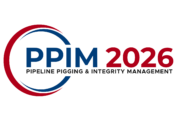COURSE SCHEDULE (both days)
7.30: Registration, breakfast, coffee
8.00 – 5.00: Course
It will be necessary to bring a laptop to this course.
COURSE OBJECTIVES
Participants of this course will be introduced to the theory and implementation of state-of-the-art nondestructive testing methods to verify material properties in situ, not only for compliance with regulatory requirements but also to better inform their integrity management decisions. The theory and practical aspects of common laboratory (benchmark) and NDT methods for testing pipe properties, including composition, hardness, strength, microstructure, and toughness, will be reviewed. The discussion will include guidance on proper sampling (how much testing is required), interpretation of results (what information can be inferred from the testing), and how to validate NDT tools and quantify measurement uncertainties. Practical case studies will be used to illustrate the interpretation of measured properties within the context of ‘reverse engineering’ the actual properties or specification of the material being tested, and the potential difference between actual and specified properties (grade) will be discussed, as will the challenges associated with extrapolating sampled data to a broader population. Finally, the major elements necessary to establish a successful internal materials verification program will be reviewed.
WHO SHOULD ATTEND
Supervisors, pipeline and facility engineers, and technicians responsible for ensuring compliance with PHMSA’s 2019 Gas Transmission rule; NDT service-providers; and related pipeline industry stakeholders will also benefit from attending the course.
On completion of this course, attendees will be able to understand:
• Federal code requirements for a nondestructive testing-based materials verification program
• Laboratory destructive testing for chemical composition, strength, and metallography
• Measurement theory and data uncertainty
• Theory behind common NDT tools that estimate strength and chemical composition
• NDT tool validation and measurement uncertainty
• In situ metallography and applications for microstructure quantification
• The risks associated with equating grade and yield strength
• Elements that comprise a successful internal NDT program
• Methods for establishing grade and vintage from NDT data
CONTINUING EDUCATION UNITS
Upon completion of the course, participants will be awarded 1.4 CEUs.
COURSE DOCUMENTATION
Complete course presentation material will be available as a PDF download prior to the course.
INSTRUCTORS
Dr. Peter Martin is a Materials Engineer specializing in the characterization of process induced structure-property relations in metallic materials. He has experience in quantitative metallography, failure analysis, additive manufacturing, and nondestructive testing.
Dr. Pooya Delshad is a Senior Materials Engineer at PG&E’s Applied Technology Services, specializing in failure analysis, metallurgical evaluation, corrosion analysis, and non-destructive evaluation techniques. He leads failure analysis investigations and materials testing for gas and electric transmission and distribution systems. Dr. Delshad received his Ph.D. in Materials Science and Engineering from the University of Alberta, Canada.
SYLLABUS
DAY 1
- 1 Course Overview
- 1.1 Overview of 49 CFR 192.607 – Materials Verification
- 1.2 Case studies illustrating the challenges in interpreting test results (assuming perfect results)
- 2 Strength testing for structural alloys
- 2.1 General Concepts
- 2.2 Lab methods for strength testing
- 2.3 NDT methods for strength testing
- 3 Measurement theory – testing uncertainty
- 3.1 General Background
- 3.2 Random versus systematic uncertainty
- 3.3 Validating nondestructive testing methods
- 4 Methods for determining composition
- 4.1 General concepts
- 4.2 Lab methods for testing composition
- 4.3 NDT methods for testing composition
DAY 2
- 5 Establishing Grade/Specification
- 5.1 Historical trends foe composition of line pipe steels
- 5.2 SME approach
- 5.3 Probabilistic and machine learning approaches
- 6 Microstructure
- 6.1 Brief review of steel microstructures and their implications
- 6.2 Lab and field methods for metallography
- 6.3 Correlating microstructures to grade and properties
- 7 Toughness
- 7.1 Using toughness for critical assessments (fitness for service)
- 7.2 Methods for estimating toughness
- 7.3 Laboratory Measurement of Toughness
- 7.4 Challenges for NDT Toughness Measurements
- 8 Elements of an Operator’s Nondestructive Examination Program (3 hours – Day 2)
- 8.1 Validating nondestructive testing methods
- 8.2 Establishing field testing plans
- 8.3 Utilization of an operator’s existing material records
- 8.4 In situ NDT data quality control and quality assurance
- 8.5 Record keeping requirements
- 8.6 NDT vendor operator qualification programs



